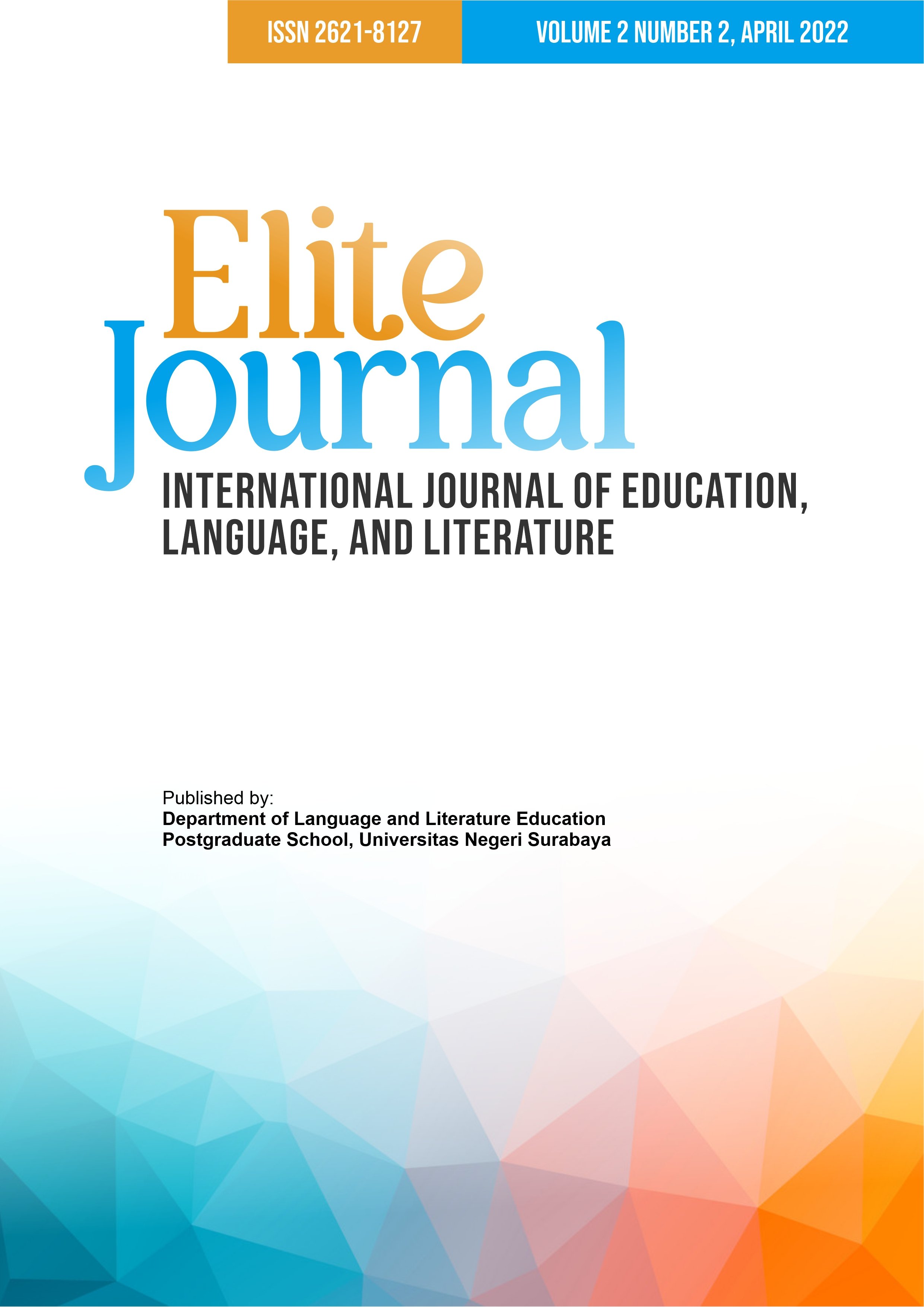ENGLISH PRONUNCIATION OF ENGLISH DEPARTMENT STUDENTS OF UNESA SEGMENTAL AND SUPRASEGMENTAL PERSPECTIVE
DOI:
https://doi.org/10.26740/elitejournal.v2n2.p116-126Keywords:
Indonesian EFL student pronunciation, segmental, suprasegmentalAbstract
Mispronunciation words, both segmental and suprasegmental features (stress), have been proved by some researchers. Meanwhile, this study is not only finding out those features that had been analyzed by previous researchers but also one more suprasegmental feature (intonation). Thus, this study’s objectives are to find mispronunciation in terms of both segmental (vowel and consonant) and suprasegmental (word stress and intonation) pronounced by fifteen students of English Department, Universitas Negeri Surabaya cohort 2018 who passed phonology and pronunciation classes. In this qualitative research, observation is applied to collect the data. The data were in the form of transcribed mispronunciation produced by the students and were analyzed using observation technique. Audio recording of reading a story aloud was the instrument for collecting the data. The result showed students committed pronunciation error in consonant /θ, v, ʒ, ʃ, ð, k, j/ vowel /a, ʌ, ɔ, ə, u, æ, ɪ/ and diphthong /aɪ, aʊ and eɪ/. The students placed primary stress on the first syllable of both noun phrases and compound nouns. Students committed intonation errors in falling tone occurred in imperative and WH-question, rising tone occurred in request and yes/no questions, and rising-falling tone occurred in strong emotion.
References
Abdullah, F., & Lulita, L. (2018). Situating English segmental and suprasegmental features proportionally: A profile of Indonesian EFL students. EEAL Journal (English Education and Applied Linguistics Journal), 1(1).
Carr, P. (2008). Glossary of phonology. Edinburgh University Press.
Creswell, J. W., & Creswell, J. D. (2017). Research design: Qualitative, quantitative, and mixed methods approaches. Sage publications.
Cruttenden, A. (2014). Gimson's pronunciation of English. Routledge.
Fromkin, V., Rodman, R., & Hyams, N. (2018). An introduction to language. Cengage Learning.
Hewings, M. (2004). Pronunciation practice activities: A resource book for teaching English pronunciation. Cambridge University Press.
Hossain, M. I. (2015). Teaching productive skills to the students: A secondary level scenario (Doctoral dissertation, BRAC University).
Huang, L. (2010). Reading aloud in the foreign language teaching. Asian Social Science, 6 (4), 148.
Moeliono, A. M., Lapoliwa, H., Alwi, H., & Sasangka, S. S. T. W. (2017). Tata bahasa baku bahasa Indonesia.
Downloads
Published
How to Cite
Issue
Section
License
Copyright (c) 2022 Inna Nur Laila, Ayunita Leliana

This work is licensed under a Creative Commons Attribution 4.0 International License.
 Abstract views: 780
,
Abstract views: 780
, PDF Downloads: 859
PDF Downloads: 859





